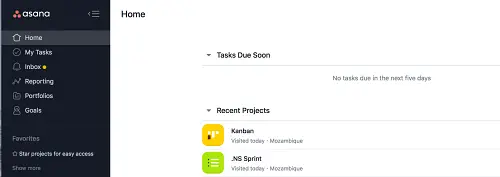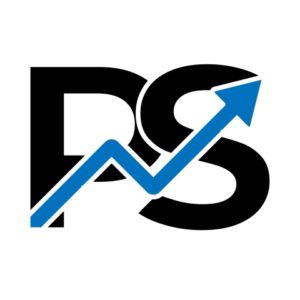Like many technology trends, “Software as a Service” (SaaS) has replaced the buzzwords that can be confusing. So, what is SaaS, and how does it help you to know?
It is a form of software delivery in which the service provider remotely hosts the software programs and distributes it among the customers using a network. Simply put, users rent software instead of buying it. Many SaaS providers offer subscription-based services that can be purchased monthly or annually.
Although it is different from the standard of buying software, SaaS can offer significant benefits in the business environment. As the integration of cloud computing increases, more software providers can add SaaS capabilities that can lead to greater gains.
How to start a SaaS business? As with any other startup, you should define the key components of your business by considering your ideal product. Targeted audience needs, monetization model, promotional methods, budget, and technology – are believed to be the most critical issues that will increase or decrease your chances of success.
Related: What is a Good Profit for SaaS Businesses?
The first step in building a SaaS is to have a clear vision of what you want to build and know the tech stack for that purpose. In the age of advanced technology, there are many options. Too many to get confused and end up making the wrong choice.
So, in this article, we’ll dig into it and see what tech stacks do SaaS products use and how you can choose yours easily if you’re looking to set feet into this business.
Which Programming Language Does SaaS Use?
SaaS products don’t just depend on a programming language, rather, they’re built upon a complete technology stack. Choosing the tech stack depends on what type of application is being developed, and what tools will help get there.
There are some important technical requirements that SaaS uses. The technical infrastructure of the SaaS product is arranged as follows:
1. Programming language:
Selecting a programming language is a very important aspect of a SaaS system as it determines the speed and response of a system. The programming language must have certain features, as it must be simple and easy to read, it must have the implementation of abstraction to simplify the program process, its language efficiency must be high to easily translate into machine code and it must have the necessary tools for development, debugging, testing and methodology for repair.
There are various programming languages used in the construction of SaaS systems, and the final choice depends on the system requirement. Most notable are:
a. Java:
Java is defined by specific information and contains programming language, interface, primary libraries, and operating time (Java virtual machine) Java operating system allows software developers to write program code in languages other than the Java programming language that is still running on Java virtual machine. The Java platform is often associated with Java libraries.
b. Python:
Python is a common purpose and advanced programming language. You can use Python to build GUI desktop applications, websites, and web applications. Python has a lot of libraries and built-in features that allow us to focus on the high-level functionality of the program rather than the implementation.
The simple rules of programming language syntax continue to make it easier for you to keep the base of the code readable and to maintain the application. There are many reasons why you should choose Python in other programming languages.
c. Ruby:
Ruby and especially the web framework, Ruby on Rails, is also a popular interpretation language. A high discovery rate means access to more libraries and web-based tools to help web developers make plans faster. Ruby has a repository of renewable libraries that are easily maintained and installed in the form of RubyGems. Like Python, Ruby is ready to automate with Puppet, which is an open-source management tool written traditionally in the language.
2. Database:
In order to develop and use a good SaaS product, you will need easier access, manipulation, and management of data to manage the large amount of useful information that comes into your system. For that purpose, choosing the right database system is important. The appropriate database depends on the amount of incoming data, the importance of speed and response to your application, and the methodology of data usage.

Popular options are:
a. SQL:
Structured Query Language (SQL) is a database of query questions used to store and manage data in the Relational DBMS. SQL was the first language introduced by EF Codd’s Relational model Almost all of the Relational Database that we see today like Oracle, Sysbase, MySQL and MS Access use SQL as the standard language for information queries. SQL is used to perform all types of data operations in RDBMS.
b. MongoDB:
MongoDB is a NoSQL database platform that facilitates the access and manipulation of huge amounts of data without compromising a lot on the speed of execution. By eliminating the need for tables and rows. and using documents and texts instead, MongoDB provide the developers with complexity and efficiency in operation, while the users with the ease and flexibility of use.
3. Cloud Service:
Cloud solutions offer great benefits to companies of all sizes, but recent research shows that less than 10 percent of organizations believe that their existing IT infrastructure is fully equipped to deal with the proliferation of cloud computing, mobile devices, social media, and data analytics. There are many benefits cloud-based solutions can offer.
Cloud-based services can help companies with a more stable online presence and can benefit them in increasing the efficiency of their operations. Cloud provides a better understanding as companies can get analytics from big data in the cloud system. The cloud facilitates interoperability as it allows activity to be accessed from multiple devices and anywhere. Cloud programs also improve customer engagement.
As we see the focus of business decision-makers ranging from cost-effectiveness in their backgrounds to the development of their engagement plan, the cloud is often seen as the most effective way to build strong customer engagement.
There are a variety of options to choose from when choosing a cloud-based service. The most notable of these are:
a. Microsoft Azure:
Microsoft Azure, formerly known as Windows Azure, is a public computer platform for Microsoft. It offers a variety of cloud services, including computers, analytics, storage, and network. Users can choose and opt-out of these services to develop and evaluate new applications, or to use existing applications in the public cloud. Using virtual machines or containers in the cloud is one of the most widely used features of Microsoft Azure.
These resources can host infrastructure components, such as domain name servers (DNS); Windows Server services – such as Internet Information Services (IIS); or third-party applications. Microsoft also supports the use of third-party applications, such as Linux.
b. Amazon Web (AWS) Services:
AWS (Amazon Web Services) is a comprehensive, flexible cloud computing platform provided by Amazon that includes a combination of infrastructure as a service (IaaS), a platform as a service (PaaS), and integrated software as a service provider (SaaS). AWS services can provide the organization with tools such as computer power, data storage, and content delivery services.
c. Google Cloud platform:
Google Cloud contains a set of virtual assets, such as computers and hard disk drives, and virtual resources, such as virtual machines (VMs), contained in Google’s data centers around the world. Each data center location is in a region. The regions are located in Asia, Australia, Europe, North America, and South America. Each region is a set of places, separated from each other within a region. Each location is identified by a name that includes the character identifier and the name of the region.
To Learn More about Software as a Service open the articles below
-
The Ultimate Project Management Software Guide

Many organizations have projects that change from basic individual tasks to complex projects, including different segments, teams, and budget plans. Following all parts of a task can be overpowering, which
-
Different Types of SaaS Products

The technological world is moving at a fast pace. Not long ago, all the major businesses had their on-site software and solutions. The word ‘cloud’ was nothing but a bunch
Key Takeaway
SaaS products have been getting a lot of limelight recently. Even though they’re subscription-based and need to be renewed continuously, the fact that you don’t have to have the infrastructure to host them makes them pretty convenient to use.
Different SaaS products have varying tech stacks that they’re built upon, including the programming language, cloud services, and so on. We have seen all about it in this article to make it easier for you in understanding SaaS better. I hope you’ll have an easier time deciding how to organize your very own SaaS product.


